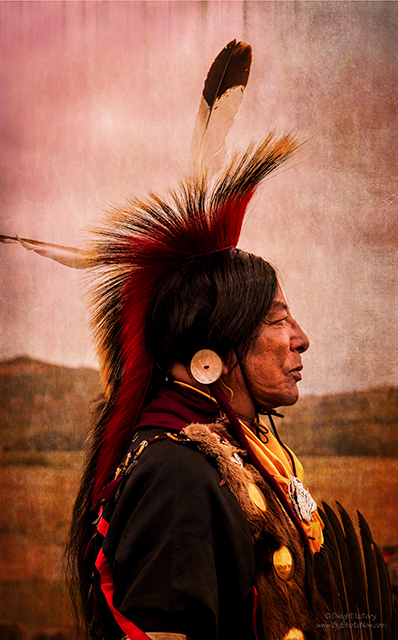This post has been moved to OpenChutes.com. All future postings of Powwows, Indian Relay Races, Rodeos and Rendezvous will be posted there from now on exclusively. So if you’re looking for new images and posts for all those events attended this year, plus all the old posts posted on BigShotsNow.com check out OpenChutes.com. See you there!

Tome Roubideaux Sioux 2016
The folks who attend powwows are a unique assortment of people. Not unique like the parking lot of a Wal-Mart but unique like a group of like-minded souls that are interested in the varied life around them in a way that many others aren’t.
On one hand you have the participants who attend these gatherings as a way to maintain the deepest contact with their culture and to celebrate their beliefs with others in a way that brings them closer together as a people. This grounds them and roots them in a connection to their culture that is difficult to get any other way. They are reaffirmed in their beliefs by the fellowship of those that have shared their life experiences, both good and bad, together. They are a family, a collective village, a group of people that can trace their beginnings back to the far distant past and celebrate them as if time didn’t matter.
Many of the participants, most in fact, who dance and take part in the various ceremonies dress in the regalia that represents their tribal affiliations and they are as distinctive and varied as the tribes and individuals within them. But for some a favorite blanket thrown across their shoulders, or a t-shirt with the faded logos of powwows of the past are enough, and they enter the circle and dance with the same fervor and beliefs as the most spectacularly dressed member there. The dress doesn’t matter, they are one.
Then there are the spectators, those who attend for many different reasons. Some are dedicated followers of the Powwow Trail and attend every one they can. They might be family members or close friends who come to support the dancers, singers and drummers. Or others who are trying to see and understand this wonderful culture in a way you can’t by reading about it. Some just come for the pageantry and to see something different. They enjoy the spectacle aspect of the gathering without delving too deeply into the culture, curious to see a lifestyle that is so different from their own, yet one that is embedded into the fabric and mainstream of our national culture. Once the powwow is over and everyone is back in their street clothes the extraordinary focus brought on tribal culture is gone, everyone, participants and spectators alike, look and act the same. We’re all back in the here and now to being everyday Americans.
Until the next powwow that is. Then the tribal culture explodes again with all the intensity and color and sound and whirlwind of activity that it has. As it has been doing for as long as the tribal cultures have existed. It is remarkable that with all the technological advancements we have made that one can attend a powwow and see into the past. The dances tell their stories, the regalia tells who the individual is, the ceremonies bind the people together again, and the circle is completed one more time.
This is a dynamic culture. It is not static. The people move forward with the time, incorporating anything new that enhances their culture, even while maintaining their direct vision of themselves as distinct members of society with a rich culture rooted deeply in our past. There is a lot going on within one of these celebrations. Attend one if you can.

You must be logged in to post a comment.